Makes and Models
Big Boots Matter
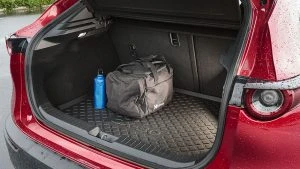
Luggage Space
If size matters to you when it comes to what you can (or can’t) fit in your boot, then how much space is commonly available in popular new car buys? The chances are you’ll want to know, so first are some of the most popular vehicles bought in Australia and their boot volume (litres). All the vehicles listed have their rear seats in place, because we all know the greatest vehicles carry a decent amount of luggage without having to flip their rear seats flat. There’s nothing worse than telling little Johnny that he can’t travel with his mates because the split folding rear seats have been split folded to take the school camp food!
At the end is a list of the best picks for carrying 550 litres or more behind the rear seats. You might be surprised, or not…
Supermini
Average boot space: 340.88 litres
1/ Renault Clio – 395 litres
2/ Honda Jazz – 354 litres
3/ Volkswagen Polo – 351 litres
Audi A1 – 335 litres
Skoda Fabia – 330 litres
Hyundai i20 – 326 litres
Kia Rio – 325 litres
Peugeot 208 – 311 litres
Hatchbacks
Average boot space: 479.40 litres
1/ Skoda Octavia 590 litres
2/ Peugeot 308 501 litres
3/ Honda Civic 492 litres
Renault Megane 434
VW Golf 380 litres
Small 4-door sedan
Average boot space: 464.75 litres
1/ Honda City | 536 litres
2/ Honda Civic | 519 litres
3/ Renault Megane | 503 litres
Kia Cerato | 502 litres
Toyota Corolla | 470 litres
Hyundai Accent Sport | 465 litres
Hyundai Elantra | 458 litres
Holden Astra | 445 litres
Mazda 3 444 litres
Audi A3 | 425 litres
Mazda 2 410 litres
Mitsubishi Lancer | 400 litres
Medium 4-Door Sedan
Average boot space: 501.82 litres
1/ Volkswagen Passat | 586 litres
2/ Skoda Octavia | 568 litres
3/ Toyota Camry | 524 litres
Kia Optima | 510 litres
Hyundai Sonata | 510 litres
Subaru Liberty | 493 litres
BMW 3 Series | 480 litres
Mazda 6 | 474 litres
Subaru Impreza | 460 litres
Ford Mondeo | 458 litres
Honda Accord | 457 litres
Large 4-Door Sedan
Average boot space: 509.2 litres
1/ Skoda Superb | 625 litres
2/ Volkswagen Arteon | 563 litres
3/ Holden Commodore | 490 litres
Chrysler 300 | 462 litres
Kia Stinger | 406 litres
Station wagons
Average boot space: 560.9 litres
1/ Holden Sportwagon 895 litres
2/ Skoda Superb 660 litres
3/ Peugeot 308 SW 660 litres
Ford Focus SW 608 litres
VW Golf SW 605 litres
Hyundai i30 SW 602 litres
Audi A6 SW 586 litres
Volvo V70 575 litres
BMW 5-Series SW 570 litres
Jaguar XF SW 565 litres
Kia Optima SW 552 litres
Ford Mondeo 541 litres
Mercedes Benz E-Class 540 litres
Subaru Levorg 522 litres
Mazda 6 SW 522 litres
Renault Megane SW 521 litres
Subaru Outback 512 litres
Peugeot 407 430 litres
Toyota Corolla SW 392 litres
Mini Clubman SW 360 litres
SUVs
LIGHT SUVs
Average boot space: 346.2 litres
1/ Citroen C3 Aircross – 410 litres
2/ Holden Trax – 356 litres
3/ Hyundai Venue 355 litres
Ford EcoSport – 346 litres
Mazda CX-3 264 litres
SMALL SUVs
Average boot space: 385.91 litres
1/ Jeep Compass 438 litres
2/ Honda HR-V 437 litres
3/ Kia Seltos 433 litres
Nissan Qashqai 430 litres
Renault Kadjar 408 litres
Mitsubishi ASX 393 litres
Toyota C-HR 377 litres
Hyundai Kona 361 litres
Mitsubishi Eclipse Cross 341 litres
Mazda CX-30 317 litres
Subaru XV 310 litres
MEDIUM SUVs
Average boot space: 496.67 litres
1/ Volkswagen Tiguan 615 litres
2/ Toyota RAV4 580 litres
3/ Nissan X-Trail 565 litres
Honda CR-V 522 litres
Subaru Forester 498 litres
Hyundai Tucson 488 litres
Mitsubishi Outlander 477 litres
MG HS 463 litres
Renault Koleos 458 litres
Kia Sportage 446 litres
Mazda CX-5 442 litres
Ford Escape 406 litres
LARGE SUVs
Average boot space: 669.50 litres
1/ Holden Acadia 1042 litres
2/ Holden Equinox 846 litres
3/ Mazda CX-9 810 litres
Toyota LandCruiser Prado 620 litres
Hyundai Santa Fe 547 litres
Toyota Kluger 529 litres
Subaru Outback 512 litres
Ford Everest 450 litres
Keep in mind that most vehicles we buy now do have split folding rear seats, so when we don’t have to carry passengers we can make use of the rear seat space in exchange for carrying cargo/luggage. Many of us don’t want to have to use the rear seat space for luggage; often the back seats are occupied with passengers anyway, so the vehicles that provide over 500 litres behind the back seats are going to be the ones that offer excellent luggage space.
If we look at averages alone, the Large SUV is easily king for luggage carrying duties. Most are seven-seater SUVs, too; but make it just the 5 seats, and they can only be a win/win combination. The next step up would be a van!
However, both the Station Wagon and Large sedan are other excellent options for you to go to for decent luggage carrying ability. Even the Medium Sedan offers some cars that provide excellent big boots: the Volkswagen Passat (586 litres), Skoda Octavia (568 litres) and the Toyota Camry (524 litres) are the best examples.
One thing that did surprise me was that the boot space in a small SUV isn’t much to write home about; its average for the class being a dismal 385.91 litres. This dropped to an abysmal 346.2 litres for light SUVs. These vehicles, and smaller are best avoided if decent boot space is what you need.
Any vehicle that can offer at least 550 litres of luggage space in the boot without having to fold down any of the rear seats is a winner for cargo carriers. If you are looking for a vehicle (that isn’t a van) that will deliver good boot space (550 litres or more) for things like: school bags, computer equipment, sport gear, holiday luggage etc., then you’ll probably need one of the following vehicles:
Hatchback:
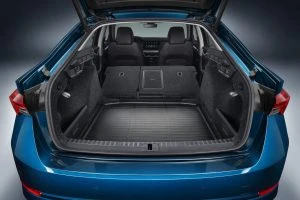
Skoda Octavia Hatchback
Skoda Octavia Hatchback 590 litres
Medium 4-dr Sedan:
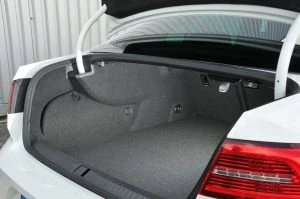
VW Passat Sedan
Volkswagen Passat 586 litres
Skoda Octavia 568 litres
Large 4-dr Sedan
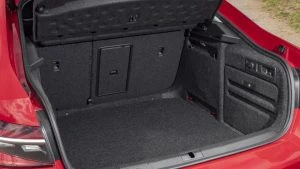
Skoda Superb Sedan/Hatch
Skoda Superb 625 litres
Volkswagen Arteon 563 litres
Station Wagon

Holden Commodore Sportwagon
Holden Sportwagon 895 litres
Skoda Superb 660 litres
Peugeot 308 660 litres
Ford Focus 608 litres
VW Golf 605 litres
Hyundai i30 602 litres
Audi A6 586 litres
Volvo V70 575 litres
BMW 5-Series 570 litres
Jaguar XF 565 litres
Kia Optima 552 litres
Medium SUV
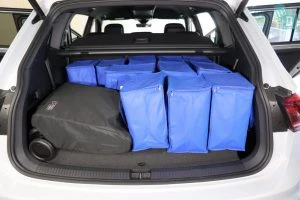
VW Tiguan SUV
Volkswagen Tiguan 615 litres
Toyota RAV4 580 litres
Nissan X-Trail 565 litres
Large SUV
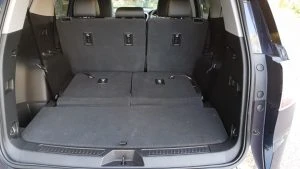
Holden Acadia 7-seater
Holden Acadia 1042 litres
Holden Equinox 846 litres
Mazda CX-9 810 litres
Toyota LandCruiser Prado 620 litres
Hyundai Santa Fe 547 litres
Kia Confirms Sorento Details For Australia.
 Kia has officially unveiled the forthcoming 2021MY Sorento. To be available in a four trim model range and coming with either a 3.5L V6 petrol engine or a refined 2.2L diesel, with an auto for the petrol and a DCT (dual clutch transmission) for the diesel, the Sorento has been sharpened, redesigned, and upgraded across the board. It’s also the first new Kia to be built upon the brand’s ‘N3’ SUV platform.
Kia has officially unveiled the forthcoming 2021MY Sorento. To be available in a four trim model range and coming with either a 3.5L V6 petrol engine or a refined 2.2L diesel, with an auto for the petrol and a DCT (dual clutch transmission) for the diesel, the Sorento has been sharpened, redesigned, and upgraded across the board. It’s also the first new Kia to be built upon the brand’s ‘N3’ SUV platform.
The four levels are: S, Sport, Sport +, and GT-Line. The petrol engine will drive the front wheels, the diesel will be powering all four corners. The petrol engine will deliver 200kW and 332Nm, with the diesel spinning Kia’s new wet-clutch DCT. Power from the 2.2L engine is 148kW and delivers torque of 440Nm. The engine itself now has a alloy head and this reduces weight by close to 20kg.
Pricing starts from $45,850 RRP and $46,990 drive-away for the 2WD petrol S. The Sport starts from $48,470 RRP and $49,990 drive-away with the Sport+ at $52,850 RRP and $54,390 drive-away. The GT-Line Petrol sees $60,070 RRP and $61,990 drive-away. Premium paint is a $695 option.
For the diesels in the same trim levels, Kia says the S will start from $48,850 RRP and $49,990. The Sport starts at $51,470 RRP and drive-away at $52,990. In Sport+ trim it’s $55,850 RRP and $57,390 drive-away. GT-Line is $63,070 RRP and $64,990 drive-away. To be built at the Hwasung plant in Korea, the Sorento will come with Kia’s 7-Year unlimited kilometre Warranty, 7-Year Capped Price Service, and 7-Year Roadside Assist. “The outgoing Sorento was a game-changer in the Australian market with previously untapped safety and convenience levels in the segment _ and the all-new model continues to take that story forward,” Kia Motors Australia Chief Operating Officer Damien Meredith said. “Across the four trim levels we believe the Sorento will meet the needs, and exceed the expectations, of anyone shopping in the seven-seat SUV market.” Mr Meredith said that Sorento’s evolution over the last 18 years echoes that of the Kia brand as a whole. “While the car was initially launched in 2002 as a utilitarian body on frame all-terrain vehicle, it quickly evolved into a more luxurious monocoque construction and now, in its fourth generation, Sorento has been transformed into something once again more desirable.”
“The outgoing Sorento was a game-changer in the Australian market with previously untapped safety and convenience levels in the segment _ and the all-new model continues to take that story forward,” Kia Motors Australia Chief Operating Officer Damien Meredith said. “Across the four trim levels we believe the Sorento will meet the needs, and exceed the expectations, of anyone shopping in the seven-seat SUV market.” Mr Meredith said that Sorento’s evolution over the last 18 years echoes that of the Kia brand as a whole. “While the car was initially launched in 2002 as a utilitarian body on frame all-terrain vehicle, it quickly evolved into a more luxurious monocoque construction and now, in its fourth generation, Sorento has been transformed into something once again more desirable.”
The exterior design cues start with the signature “tiger grille” and the headlights have a “tiger eye LED DRL. Much like the recently revealed Carnival, lines draw the eye to the headlight design which further creates a tiger face impression. The lower air intake has been revised too, with a more rectangular shape, and again similar to Carnival has wing shaped air curtains to funnel air. Restyled tail lights do away with the formerly horizontally oriented design, and now have a pair of vertically strips with an uppermost angle-forward design that echoes the rear window’s trailing edge. As is common with updates, there has been a change in size. Width is up by 10mm to 1,900mm. Length is up by the same to 4,810mm however the front and rear overhangs have been subtly reduced which makes the Sorento look longer. In between is a wheelbase that’s up by 35mm to 2,815mm.
As is common with updates, there has been a change in size. Width is up by 10mm to 1,900mm. Length is up by the same to 4,810mm however the front and rear overhangs have been subtly reduced which makes the Sorento look longer. In between is a wheelbase that’s up by 35mm to 2,815mm.
The new model is 1900mm wide, 10mm wider than the third-generation Sorento. In profile, the proportions of the Sorento are subtly adapted to make it appear longer. The new model is 10mm longer than its predecessor (now 4810mm), yet it features shorter front and rear overhangs. The additional length is found in the wheelbase (a result of the Sorento’s new platform), which has grown by 35mm to 2815mm.  The A-pillar has been pushed back by 30mm and leads to a 10mm taller roofline. New styling cues are found with the shark-fin on the C-pillar and the completely redesigned tail lights. The model’s name is emblazoned across the tailgate. Colourwise the new Sorento will offer seven exterior paint finishes with Clear White the standard, plus six Premiums: Mineral Blue (New Colour), Snow White Pearl, Steel Grey, Silky Silver, Aurora Black and Gravity Blue. All trims will have a full-size spare in 17-inch, 18-inch, 19-inch or 20-inch depending on trim level.
The A-pillar has been pushed back by 30mm and leads to a 10mm taller roofline. New styling cues are found with the shark-fin on the C-pillar and the completely redesigned tail lights. The model’s name is emblazoned across the tailgate. Colourwise the new Sorento will offer seven exterior paint finishes with Clear White the standard, plus six Premiums: Mineral Blue (New Colour), Snow White Pearl, Steel Grey, Silky Silver, Aurora Black and Gravity Blue. All trims will have a full-size spare in 17-inch, 18-inch, 19-inch or 20-inch depending on trim level.
The interior also has had the wand waved. The GT-Line will have mood lighting in the door trim and from underneath the dashboard, and will have a pair of digital displays which at 12.3 inch (GT-Line) and 10.25 inch (Sport, Sport+ and GT-Line, 8.0 in S) that will control most of the car’s functions. The layout will provide an almost ultra-widescreen experience. Capacitive touch buttons on the screen sides will provide the control options. Trim materials across the range have been revised with embossed black cloth, leather appointed black cloth and black quilted Nappa leather appointed seats being available depending on the model chosen. Increasing the wheelbase sees cargo and passenger carrying ability increased with 616L growing to 2,011L with all seats folded. With the third row raised there is still 187L available, an increase of 32% compared to the previous model. Controls for the rear seat passengers see a soft touch button to fold the second row. These also have a sliding increase of 45mm for extra access. Third row passengers have an armrest that has increased by 100mm and incorporate a smartphone tray and cupholder.
Increasing the wheelbase sees cargo and passenger carrying ability increased with 616L growing to 2,011L with all seats folded. With the third row raised there is still 187L available, an increase of 32% compared to the previous model. Controls for the rear seat passengers see a soft touch button to fold the second row. These also have a sliding increase of 45mm for extra access. Third row passengers have an armrest that has increased by 100mm and incorporate a smartphone tray and cupholder.
Ride and handling will be improved in the new 2021 Sorento; the increased wheelbase partners with a 4% tighter bodyshell (made from steel and aluminuim for strength and weight reduction) for increased rigidity and reduced body vibration. Geometry changes to the suspension have increased road-holding and for those that enjoy some off-road action, a new Terrain mode for the diesel engines, operated via a rotary dial in the centre console, provide better traction in Snow, Mud, and Sand. Convenience features include Bluetooth pairing for two phones, three USB ports up front and two for second row passengers (Sport and GT-Line), plus 12V sockets for the third row passengers. Sport+ and GT-Line offer an extra pair of USBs. GT-Line will have a HUD or Head Up Display and a 12 speaker Bose system for pure sounds. The other three models will have six speaker sound.
Convenience features include Bluetooth pairing for two phones, three USB ports up front and two for second row passengers (Sport and GT-Line), plus 12V sockets for the third row passengers. Sport+ and GT-Line offer an extra pair of USBs. GT-Line will have a HUD or Head Up Display and a 12 speaker Bose system for pure sounds. The other three models will have six speaker sound.
For safety Kia’s Advanced Driver Assist System, ADAS, includes Kia’s Autonomous Emergency Braking technology with pedestrian, cyclist and vehicle detection. This also detects oncoming traffic when making a turn at a junction. The Sorento is also available with Blind-spot View Monitor (GT-Line only), Surround View Monitor (GT-Line) and Blind-spot Collision-avoid Assist, Advanced Smart Cruise Control, Lane Following Assist and Driver Attention Warning. Kia’s ‘level two’ autonomous driving technology, Lane Following Assist (LFA), controls acceleration, braking and steering depending on the vehicles in front. LFA operates between speeds of 0 and 180 kph, using camera and radar sensors to maintain a safe distance from the car in front, while monitoring road markings to keep the Sorento in the centre of its lane. The new Sorento also features a Rear View Monitor (RVM) with Reverse Parking Collision-Avoidance Assist (PCA) (GT-Line only), and Rear Cross-traffic Collision-avoidance Assist (RCCA). In addition, it is also the first Kia available with the company’s new Remote Smart Parking Assist (RSPA) (GT-Line only), which enables drivers to move their car autonomously out of a front-and-back parking space remotely with their key fob. This is designed to make it easier for passengers to get in and out of the car in tight parking spaces or if another driver parks too close to access any of the doors.
The new Sorento also features a Rear View Monitor (RVM) with Reverse Parking Collision-Avoidance Assist (PCA) (GT-Line only), and Rear Cross-traffic Collision-avoidance Assist (RCCA). In addition, it is also the first Kia available with the company’s new Remote Smart Parking Assist (RSPA) (GT-Line only), which enables drivers to move their car autonomously out of a front-and-back parking space remotely with their key fob. This is designed to make it easier for passengers to get in and out of the car in tight parking spaces or if another driver parks too close to access any of the doors.
RSPA brakes the Sorento automatically if it detects another car, cyclist or pedestrian behind the vehicle or crossing behind it. The Sorento’s Safe Exit Assist feature also prevents rear doors from opening if the vehicle detects a hazard approaching from behind, such as a cyclist or another vehicle. Advanced driver assistance systems with new Remote Smart Parking Assist
There are seven airbags which includes a centre airbag but not a kneebag. There is also Kia’s Multi-collision Brake System, a crash mitigation system that engages the brakes when the system’s airbags have been deployed, further adding safety from other potential impacts.
The 2021 Sorento is available for test drives at Kia dealerships.
2020 Nissan Juke ST: Private Fleet Car Review.
This Car Review Is About: A substantially changed Nissan Juke. It’s the second model Australia has seen and the first wasn’t received with open arms due to its controversial styling. It’s still not pretty but in the greater context, it is a far better looking vehicle. There are four trim levels: ST (tested), ST+, ST-L, and the top of the range Ti. How Much Does It Cost?: Nissan’s website lists the range as starting from $30,490 drive-away for the ST. The range tops out at $39,490 drive-away.
How Much Does It Cost?: Nissan’s website lists the range as starting from $30,490 drive-away for the ST. The range tops out at $39,490 drive-away.
Under The Bonnet Is: A three cylinder petrol engine with a turbo. Thankfully. Peak torque of 180Nm comes in at 2,400rpm and that’s barely enough to spin the seven speed dual clutch transmission. peak power is double figures at 84kW. In comparison Kia’s Picanto GT-Line has 172Nm but that’s available from 1,500rpm to 4,000rpm. The fuel tank is a decent 46.0L and economy, says Nissan, is 5.8L/100km on the combined cycle and given we’ve been seeing 6.8L/100km on our 70/30 urban/highway sprint, that seems spot on. Dry weight is 1,251kg. On The Outside It’s: A distinctively different vehicle for the second time round compared to version 1. The profile has a similar stance, with a steeply raked rear window line and hidden rear door handles, but it’s the front that has copped the biggest makeover. The distinctive mid-set headlights have been revised to reduce their prominence, and the formerly high-set driving lights that rode the fender’s ridge have been brought down to engage the top of the V grille for a far better integrated look. The rear loses the ovoid and bloated V shaped lights and now have a slimmer, more integrated, look. They’re sharper, have restyled interior designs, and go closer to matching the restyled front.
On The Outside It’s: A distinctively different vehicle for the second time round compared to version 1. The profile has a similar stance, with a steeply raked rear window line and hidden rear door handles, but it’s the front that has copped the biggest makeover. The distinctive mid-set headlights have been revised to reduce their prominence, and the formerly high-set driving lights that rode the fender’s ridge have been brought down to engage the top of the V grille for a far better integrated look. The rear loses the ovoid and bloated V shaped lights and now have a slimmer, more integrated, look. They’re sharper, have restyled interior designs, and go closer to matching the restyled front. On The Inside It’s: A comfortable place to be for an entry level vehicle. It’s a key start, for, umm, starters, with manual seats and no heating or venting naturally. They do have a surprising amount of lateral support and have adjustable lumbar support too. There is no DAB audio via the 8.0 inch touchscreen which again doesn’t default from the warning screen at all. It does have Android Auto and Apple CarPlay.
On The Inside It’s: A comfortable place to be for an entry level vehicle. It’s a key start, for, umm, starters, with manual seats and no heating or venting naturally. They do have a surprising amount of lateral support and have adjustable lumbar support too. There is no DAB audio via the 8.0 inch touchscreen which again doesn’t default from the warning screen at all. It does have Android Auto and Apple CarPlay. The aircon is a bit off, as the lowest fan speed is sometimes too much in flowing air, and sometimes the coolest setting of the rotary dial is warm air, even when using the slightly redundant non-recirculating air tab. By slightly redundant, one tab to have recirculate on or off should suffice. The centre vents are three, a little unusual in count, and sit in a nicely hued grey plastic. This extends to the storage locker free centre console, which does, at least, house a pair of cup holders. At the dashboard end is a USB and 12V port pairing.
The aircon is a bit off, as the lowest fan speed is sometimes too much in flowing air, and sometimes the coolest setting of the rotary dial is warm air, even when using the slightly redundant non-recirculating air tab. By slightly redundant, one tab to have recirculate on or off should suffice. The centre vents are three, a little unusual in count, and sit in a nicely hued grey plastic. This extends to the storage locker free centre console, which does, at least, house a pair of cup holders. At the dashboard end is a USB and 12V port pairing.
For the driver there is a colour info screen, accessed via tabs on the tiller’s left spoke. It’s friendly to both use and look at. Either side are standard looking analogue dials. It’s the same for the central dash controls; radio and aircon are dials and aside from the airflow, work as they should. Cargo space is decent enough with a lowish lip and a floor that’s under the lip itself. This isn’t terribly common for the class of vehicle as most have either a floor close to the load lip or level with it, so here it’s a pleasant change to be able to drop things down.
Cargo space is decent enough with a lowish lip and a floor that’s under the lip itself. This isn’t terribly common for the class of vehicle as most have either a floor close to the load lip or level with it, so here it’s a pleasant change to be able to drop things down.
It’s the same with the seating and room. There’s good head, shoulder, and leg room for pretty much anyone that doesn’t play football or basketball. Leaving aside the lack of a centre console bin, there was rarely any sense of the front passengers rubbing elbows, and the rear pews, suitable for two people really, delivered no sounds of protest in regards to feeling cramped. On The Road It’s: Jeckyll and Hyde. The engine and DCT combination is abysmal. The DCT is problematic at best, with gaps that the Grand Canyon would think are huge when it comes to swapping between park, Drive, reverse. The time to re-engage is measured by calendars, not seconds. the problem is exacerbated by the time it takes for any torque to arrive on the scene when the accelerator is pressed at a Stop sign, for example. A driver could say “Beetlejuice Beetlejuice Beetlejuice” quicker than it takes for forward momentum to commence.
On The Road It’s: Jeckyll and Hyde. The engine and DCT combination is abysmal. The DCT is problematic at best, with gaps that the Grand Canyon would think are huge when it comes to swapping between park, Drive, reverse. The time to re-engage is measured by calendars, not seconds. the problem is exacerbated by the time it takes for any torque to arrive on the scene when the accelerator is pressed at a Stop sign, for example. A driver could say “Beetlejuice Beetlejuice Beetlejuice” quicker than it takes for forward momentum to commence.
Once the Juke is underway and there is that characteristic three cylinder thrum, a wonderfully benign chassis is displayed. There’s a proper heft to the steering, good communication from the front wheels, almost agreeable braking feedback as well. It’s almost as if there were two different personalities for the Juke… The chassis dynamics aren’t the best in class but there isn’t a lot to dislike either. It’s decently composed in normal driving situations, with only the bigger and closer irregularities making the Juke feel uncertain on all four corners. Bump thump on speed reducers were noticeable more for the upper end of the suspension feeling softer otherwise the ride quality is of a pleasing enough level.
The best way to get the Juke rolling is with a egg-sensitive squeeze of the throttle. This tends to clamp the clutches together in a smoother manner and allows the progression of the go-pedal to engage the engine in a quicker manner. Coming into traffic from an intersection is where this method worked best, as once the car had some forward movement a harder press saw revs climb and take hold of those 180 torques. Rolling acceleration was much the same. There are two paddle son the steering column and these made a marginal improvement to how the driveline did its thing. The brakes are drum and disc, however the benefit of the Juke’s comparatively light-weight mass overcomes the ancient design of the drums. There was noticeable hints of the system feeling overwhelmed at times, with the ABS on the verge of intruding before deciding to sit back down.
The brakes are drum and disc, however the benefit of the Juke’s comparatively light-weight mass overcomes the ancient design of the drums. There was noticeable hints of the system feeling overwhelmed at times, with the ABS on the verge of intruding before deciding to sit back down.
A minor niggle was the Auto Stop/Start. On pickup, a fault light was displayed and using the tab to engage & disengage the feature did not remove it. However, later in the day, the system appeared to have reset as it didn’t show again.
What About Safety?: Juke in ST trim has six airbags, plus what Nissan term “Intelligent Emergency Braking” with Pedestrian and Cyclist detection. That’s elsewhere known as Autonomous Emergency Braking….Forward Collision Alert, reverse camera, Lane Departure and Blind Spot warnings are standard, as is Rear Cross Traffic Alert and rear parking sensors.
What About Warranty And Service?: Nissan offer all vehicle five years worth of 24/7 roadside assistance. That’s a good sweetener to start with. Then five years and unlimited kilometres carry the nice further. servicing costs will vary depending on vehicle however Nissan’s website has a link to allow owners to enter their VIN (Vehicle Identification Number) to provide a more concise pricing idea for the six capped price services.
At The End Of The Drive. The Juke ST suffers mostly from an under-torque delivering engine and a gearbox better suited elsewhere. Our final economy figure was still 6.8L/100km and we couldn’t help but feel that a more conventional transmission or, lawd help us, a CVT, would be better suited for the tiny 1.0L. Aside form that, it’s a decently enjoyable drive, with good handling and ride. It’s roomy enough inside for four and has the features the “younger people” would enjoy with the apps for connectivity.
Check out the Juke ST from Nissan for yourself here.
Australian Car Sales Continue Downwards Trend.
Australia’s Federal Chamber of Automotive Industries has released the latest sales figures for 2020, and not unexpectedly, it shows that the nation’s new car buying habits are continuing to be affected by the pandemic.
August for this year saw 60,986 new vehicle sales. That’s 24,647 or 28.8% less than August of 2019, and includes one fewer selling day or approximately 831 vehicle sales. or -28.8% on August 2019 (85,633) vehicle sales. August 2020 had one less selling day (25.8) than August 2019 and this resulted in a decrease of 831.5 vehicle sales per day. In the Passenger Vehicle segment, August had a reduction of 11,035 for a 42.8% decrease, whilst the Sports Utility segment went backwards by 6,652 or 17.0% compared to August 2019. This month also marked the first time a Hybrid vehicle saw the number 1 spot, with the Toyota RAV4 topping the charts. Last year’s August figures had 1,049 hybrid SUV sales, with this year notching 4,809 sales. In a Year To Date measurement, it’s 20,566 against just 5,205 for 2019. The PHEV or Plug-in Hybrid EV sector also grew, with 74 in August 2020 against 63 for the corresponding moth last year.
Last year’s August figures had 1,049 hybrid SUV sales, with this year notching 4,809 sales. In a Year To Date measurement, it’s 20,566 against just 5,205 for 2019. The PHEV or Plug-in Hybrid EV sector also grew, with 74 in August 2020 against 63 for the corresponding moth last year.
The RAV4 range dominated sales on its own, with 24,768 sales YTD and 4,825 for August. In second place was Mazda’s CX5, with 13,830 and 1,884 respectively. The RAV4’s increase represents a YTD percentage increase of 140.5 and a monthly percentage increase of 55.4.
For the 4×4 pick-up sector, Ford’s Ranger outsold the Mitsubishi Triton and Toyota HiLux in August. 2,718 were sold, over 1,278 for the Triton and 936 for the Hilux. On a YTD basis the Ranger was barely ahead of the HiLux, with the figures showing 22,923 over 20,263 whilst Triton’s YTD figures were 10,914.
The RAV4 contributed to Toyota topping the sales charts for August, with 12,449 sales. Mazda took the silver on 6,921 sales whilst the Korean duo took it to the wire. Hyundai notched 4,525 sales, Kia with 4,521 sales, and just shaded Mitsubishi with 4,308 sales. In the Small car segment Corolla just edged the i30, with 1,464 over 1,429, with Kia’s Cerato in third on 1,264. There was a surprise in the Light Cars $25K+ segment, with the Chinese owned MG brand selling 654 MG3s, ahead of Kia’s Rio on 445. The Camry absolute blitzed the under $60K medium segment with 910, whilst the Skoda Octavia stole second over the Mazda6, with 182 to 174. For the Large Car segment in both the under and over $70K bracket, Kia’s Stinger swept all before it with 178, triple that of the Mercedes-E-Class on 53. Kia also dominated the People Mover category, with the soon to be updated Carnival seeing 284 sales. Hyundai’s iMax was a distant second at 72. the Sports cars segment had the Mustang continue its winning way in both under and over $80, with 147 new sales, nearly doubling both the Hyundai Veloster (78) and Mercedes-Benz C-Class Coupe/Convertible (75).
For the Large Car segment in both the under and over $70K bracket, Kia’s Stinger swept all before it with 178, triple that of the Mercedes-E-Class on 53. Kia also dominated the People Mover category, with the soon to be updated Carnival seeing 284 sales. Hyundai’s iMax was a distant second at 72. the Sports cars segment had the Mustang continue its winning way in both under and over $80, with 147 new sales, nearly doubling both the Hyundai Veloster (78) and Mercedes-Benz C-Class Coupe/Convertible (75).
Breaking down the Passenger Car segment has Toyota on 2,700, nudging Kia at 2,515. Hyundai took third with 1,776.